Planning of hostilities of partisans of the western regions of the RSFSR
The experience of the partisan struggle in the fascist rear has convincingly shown that the planning of the combat activity of the partisan formations was one of the main factors of its high effectiveness. The guerrillas usually achieved the greatest successes in cases when the efforts of individual detachments and brigades were united by a common plan, and their strikes were closely associated with the actions of regular troops.
Of considerable interest is, for example, the experience of planning combat actions of partisan units and formations located in the western Russian regions, which, together with Belarusian and part of Ukrainian partisans, successfully operated in 1941-1943. in the rear of the enemy. During these years, 13 partisan brigades and 4 separate detachments were in the German-occupied territory of the Kalinin Oblast, which together numbered about 5,5 thousand fighters. In the Smolensk region, 127 partisan detachments (over 11 thousand fighters) fought in the enemy’s rear. Large partisan forces based in the Oryol region. In total, there were 18 partisan brigades, as well as several separate units that united more than 19 thousand partisans. In addition, on the border of the Oryol and Kursk regions, in the Khinelsky forest area, there were two Kursk partisan brigades as part of the 14 squads with a total number of soldiers of about 4 thousand people.
Guidance of the guerrilla combat operations was carried out by the front headquarters of the partisan movement (BBA), which received instructions in the form of directives and orders from the Central Headquarters of the partisan movement (CSPP), as well as from front-line military councils. Prior to their formation, the guerrilla units were occasionally assigned to headquarters of search unions, in whose bands they were based. For example, in April 1942, the headquarters of the Kalininsky Front developed an “Action Plan to reduce enemy maneuverability, create difficulties for him to bring and evacuate during the spring thaw period”, which was designed mainly to perform private tasks and not associated with any particular operation.
With the growth of the partisan movement, it became necessary to use the partisan forces more purposefully, to coordinate their actions clearly with the general plan of the armed struggle. Conducting coordinated strikes against the German troops from the front and rear became possible on a large scale only since the autumn of the 1942 year, that is, after Central Broadband was established at the MIC headquarters, and frontal BBA was in place. Partisan detachments began to receive combat missions from them, taking into account the plans of front-line operations and the military campaign as a whole. This immediately affected the efficiency and purposefulness of the guerrilla actions. Operations departments were created in each broadband access network. Their responsibility was to develop both general, for a certain period, and private action plans of partisan forces in the interests of the front troops in various operations.
Among such documents relating to the beginning of the activity of front-line broadband access, one can single out, for example, the “Operational plan of combat actions of partisan detachments and brigades for July – August 1942”, compiled by Kalininsky broadband (chief of staff VV Radchenko). Work on it was conducted during the preparation of the troops of the Kalinin and Western fronts to conduct the Rzhev-Sychev offensive. Based on the general tasks of the front command, Kalininsky broadband service set the task for the partisan units to disrupt the planned supply and control of the German troops (destruction of highways and communication lines, destruction of ammunition depots and fuel), and intensify reconnaissance in the interests of the front - to clarify the forces, means and grouping of the fascist troops in the front line. To this end, it was planned to organize monitoring of the movement, the nature of traffic and their direction, to carry out raids on the headquarters and garrisons, to seize documents and prisoners. The plan provided for the redeployment of a number of partisan formations to areas from which it was more convenient to strike at the most vulnerable centers, road junctions and main German railways.

Similar plans were developed in other front-line broadband access. To coordinate the actions of the partisan brigades and detachments, to quickly obtain information about their combat and intelligence work in the center of the base area of several partisan formations, the leadership headquarters (chief, commissar, deputy intelligence officer, five liaison officers and two radio operators) were organized. Maintaining a stable connection with front-line broadband access, they promptly assessed the situation, combined the efforts of subordinate formations (detachments) and set them combat missions. In various areas, these leadership bodies were called differently: operational centers, joint command, operational groups, etc.
Experience has shown that advance planning of guerrilla warfare significantly increased the effectiveness of their struggle. Intensifying sabotage activities in the German rear units of the Army Group Center, the partisans provided considerable assistance to regular troops. Army headquarters Center, for example, reported 1 on September 1942: “On the Polotsk-Vitebsk-Smolensk line, systematic guerrilla actions accompanied by explosions of trains, rails, overpasses, arrows, disassembling rails and tilting telegraph poles caused an almost complete breakdown of traffic. At present, explosions have begun on such lines and sections along which the movement has previously proceeded without interference. ”
A significant role in the further improvement of guerrilla planning was played by the order of NCO No. 139 of 5 of September 1942 of the year “On the tasks of the partisan movement”. It assessed the results of the partisan movement, determined the paths of its development and set specific tasks for the partisan detachments. The requirements of the order, as well as the instructions of the Central Front, and the military councils of the fronts, which developed the main provisions of this important document, formed the basis for the operational planning of the guerrilla actions for a long period.
In order to bring the guidelines to all registered partisan detachments, front-line broadband communications sent their officers and liaison officers to the territory temporarily seized by the enemy, who were tasked not only to familiarize the squad command with the text of the order, but also to provide the necessary assistance in organizing its implementation. For example, Bryansk broadband sent a group of 12 officers to the rear of the enemy, headed by chief of staff A.P. Matveyev. 14 liaison officers, as well as a group of staff officers and workers of the Smolensk regional committee of the CPSU (b), were sent from Western broadband to the partisan base areas.
Based on the requirements of order No. 189 and the situation at the front and in the enemy rear, the CSPD began systematically coordinating the actions of several partisan groups based in several fronts, which was of great operational importance. For example, December 5, 1942, the head of the Central Production and Training Center, Lieutenant-General P.K. Ponomarenko approved the “Plan of combat and sabotage actions of partisan brigades and detachments operating on the Western and Bryansk fronts”. The guerrillas were supposed to break the systematic operative transportation of the fascists and thereby render effective assistance to the Red Army, leading the counteroffensive at Stalingrad, and to prevent the strengthening of the enemy grouping on the southern wing of the front. The plan included the organization of a number of massive raids on the most important enemy communications. Thus, the partisan brigades of F.S. Danchenkova, V.I. Zolotukhina, G.I. Kezikova, G.I. Orlova, I.A. Ponasenkova, A.P. Shestakova and individual detachments M.I. Duca and M.P. Romashina was ordered by mining and blasting bridges across the Navlya River, Desna to disable the railways of Roslavl, Unechsky and partly of the Bryansk railway junction, and the joint partisan detachments of D.V. Emlyutina and I.K. Panchenko violate military and transport rail transportation on the routes Bryansk-Orel-Kursk, Bryansk-Navlya-Lgov and Bryansk-Pochep-Unecha.

As a result of targeted strikes by partisans on railway communications, the carrying capacity of the railways adjacent to the Bryansk junction significantly decreased, and the enemy was forced to attract large forces to guard them. The nature of guerrilla combat planning in the western Russian regions in 1943 was greatly influenced by the transition of Soviet troops to active offensive actions in the central sector of the Soviet-German front, the increase in the scope of guerrilla warfare, the improvement of the leadership system and improved communication of guerrilla units with leadership bodies.
At the end of winter, the Supreme Command headquarters set out to conduct simultaneously two major operations: against the army groups “Center” and “North”. The first involved the troops of four fronts: Kalinin, Western, Bryansk and Central. In accordance with the general concept of the Supreme Command headquarters for the operation, the Central Battle Forwarding Directorate developed a plan of action to intensify the combat activity of the partisan formations operating before these fronts for February 1943 of the year. Particular attention was paid to the commanders of partisan formations to strengthen sabotage work carried out on the railways. The private tasks of the largest partisan groups and brigades were also identified. In total it was supposed to blow up 14 railway bridges and crush several stations. Front-line broadband access was required to specify the tasks of the other brigades (separate units), to organize interaction between them and to ensure the operations carried out with material and technical means.
In accordance with the general guidelines defined in the plan for actions of the Central Front Guard, the front-line broadband services planned combat activities of subordinate partisan formations in more detail. Thus, Kalininsky Broadband Broadcasting Service developed the “Battle Plan of the Kalininsky Front Partisans for February – March 1943 of the Year,” in which each brigade was identified specific sections of roads for sabotage. To assist the advancing Soviet troops in early February, the forces of all brigades and detachments planned to carry out a simultaneous attack on four railway sections: Novrsokolniki-Sebezh, Nevel-Polotsk, Dno-Novosokolniki and Vitebsk-Smolensk. In total, it was planned to carry out about seven hundred explosions on railway lines and to arrange more than eight hundred ambushes on the roads.
In conditions of constant fierce battles with punishers, despite the lack of explosives and mine-blasting equipment, Kalinin partisans, for example, in February 1943 destroyed the 71 bridge, of which 23 rail, and in March respectively 79 and 30. On the railways, they systematically arranged train derailments. The capacity of the partisan-controlled roads has significantly decreased.
Western broadband communications (Chief of Staff DM Popov), in connection with the upcoming operation of the forces of the left wing of the Western Front in the Bryansk sector, developed in mid-February 1943, “A plan for the operation to defeat the rear of the Bryansk-Kirov enemy group”. The plan defined the tasks for the brigades and detachments of mainly two partisan groups (Kleutnian and Dyatkovo), whose efforts concentrated on disrupting the enemy’s rail traffic. The main targets for the attack were railway stations, passing points and bridges. A characteristic feature of this document was the fact that, in addition to the distribution of tasks between the partisan formations, communications and supply issues were developed. To improve the operational leadership of the partisan brigades at the military council of the 10 Army, the Southern Task Force was formed, consisting of the chief, his assistant in the operational unit and 7 officers. The group had a radio station and other means of communication, and from February 15 the X-NUMX of the Р-3 aircraft and the U-5 aircraft squadron were assigned to it.
In connection with the formation of the 15 in February of the 1943 of the Central Front and the general change in the operational situation in the Oryol-Bryansk area, the partisans of the Bryansk forests were in the action zone of two fronts. Therefore, the tasks of the Oryol partisans were soon changed, and they began to act mostly in the interests of the Central Front.
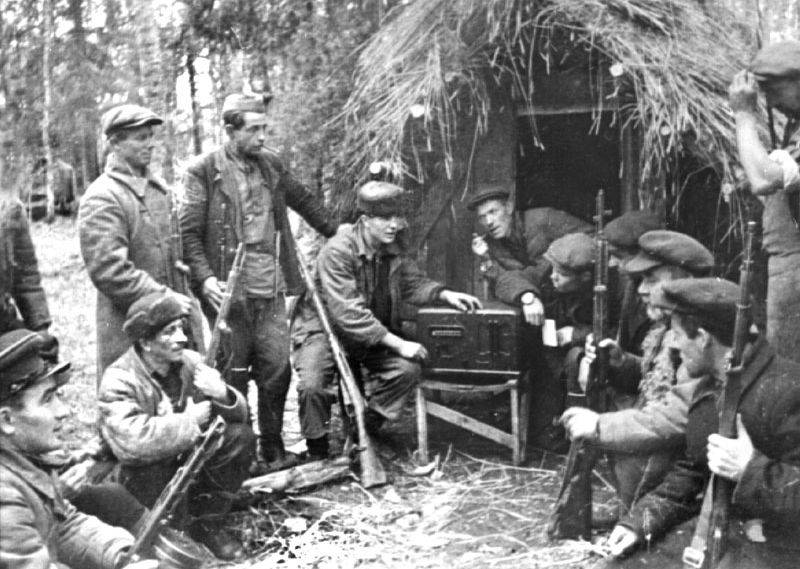
The joint efforts of the Bryansk broadband workers and the Central Front headquarters developed two plans for interaction of the Central Front forces: one with the partisans of the southern regions of the Bryansk forests, and the other the northern areas of the Oryol region. The guerrillas were supposed to increase sabotage and disorganize traffic on the most important sections of the Bryansk railway junction, as well as on certain highways. The partisan brigades of the Bryansk region planned to prepare and maintain a defensive line on both banks of the Desna in order to ensure the successful crossing of the river by the advancing units of the Red Army.
Following the instructions of the military command, the partisans dramatically increased the number of sabotage carried out on the transport arteries. Dozens of trains with German military equipment and soldiers flew down the slope. As a result of the undermining of railway bridges, the transfer and supply of fascist troops was disrupted. For example, an explosion of the railway bridge over the Desna at the Vygonichi station stopped the traffic on this most important highway for 28 days.
On the eve of and during the battle of Kursk, the front command when planning guerrilla actions paid special attention to obtaining intelligence information about the enemy from the partisans. In this respect, characterized by prepared broadband and approved by the command of the Western Front (April 9 and June 16, respectively), the Operational Plan for the months of April-May 1943 of the year and the Operational Plan for June, July, and the months of 1943 of the year. The analysis of these documents shows that the guerrilla was required at that time the most diverse information about the state and actions of the enemy. In order to strengthen the partisan intelligence agencies, highly qualified specialists, properly trained in the Soviet rear, were sent to the deputy commanders of the partisan brigades and reconnaissance detachments. So, by the beginning of July, 1943 of the Western Broadcasting Company sent 11 reconnaissance commanders to the partisan units subordinate to it. To conduct briefings in the course of short-term gatherings of the leadership of the intelligence units, the practice of sending broadband services to the partisans was practiced in the enemy's rear.
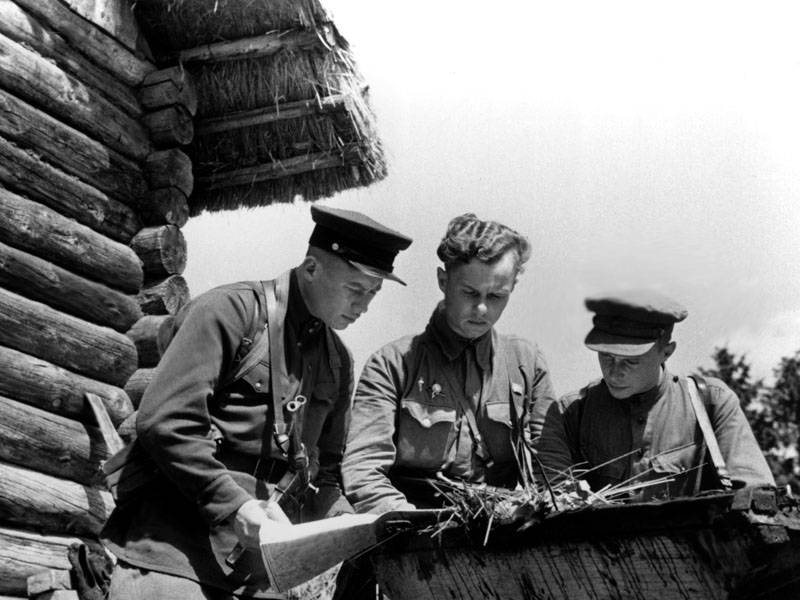
Great attention was paid to intelligence and broadband access on the Central Front. In connection with the continued concentration of the fascist troops in the Orel area and the upcoming important events there, he directed his main efforts to disrupt the planned movement along the highways of the Bryansk railway junction and expand the network of intelligence agents in cities and large villages. All these issues are reflected in the “Plan of combat, sabotage and reconnaissance activities and the growth of the partisan movement in the temporarily occupied areas of the Oryol region by the German invaders for the summer season 1943 of the year”, approved by 18 in May by the head of broadband access on the Central Front.
In addition to intelligence and sabotage on enemy communications, BBA also set other tasks, for example, to expand the guerrilla movement, improve the operational leadership of the partisan detachments and their logistical support. The combat plans of the partisans of the western regions of the RSFSR, drawn up by front-line broadband access services for the spring and summer of 1943, were a new step towards improving the operational use of partisan forces. In particular, the tasks of the partisan formations were set on the basis of a comprehensive account of the situation and the nature of the goals facing the fronts. The plans reflected more specific tasks of conducting intelligence activities in the interests of the formations of regular troops. Much more attention was paid to improving the management of guerrilla groups, especially maintaining regular and reliable communication with them. An important place was given to the issues of providing with the material and technical means of the planned operations.
The growth of the partisan movement and the centralization of the leadership allowed them to plan major operations along with the general plans of the partisan combat activities. So, by the middle of July, 1943, at the direction of the MTC, Central ShPD developed an operation to combat the enemy’s rail lines, which was called the “Rail War”. Together with the Belarusian, Leningrad and Ukrainian partisans, the partisans of the Kalinin, Smolensk and Oryol regions were to take part in the first massive strike.
On the basis of the general plan of the operation, private plans were drawn up for all front-line broadband access, which indicated: areas of highways planned for destruction and their length; guerrilla forces involved in the operation; the extent of the planned damage to the railways in these areas (for example, for Kalininsky broadband services - 50%, for the West - 20%); the required amount of explosives and ammunition; the need for aircraft for the delivery of combat cargoes; platforms and places of discharge of goods; airfields from which it was supposed to transfer cargo. Calculations were also made of the number of rails undermined in the first simultaneous impact, and the time to approach the objects. In total, for the partisans of the western regions of the RSFSR, it was planned to undermine more than 722 thousand rails on railway sections with a total length of 49 km. To do this, partisan formations had to deliver over 12 tons of combat cargo, including about 10 tons of explosives.
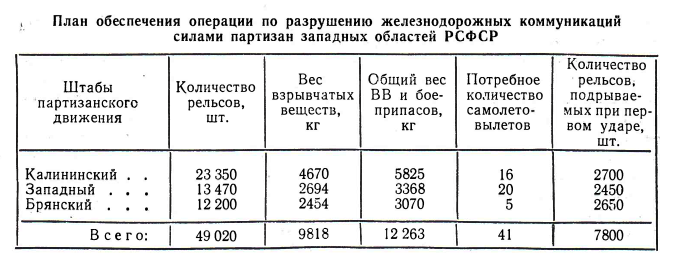
After finalizing the private plans of Operation Rail War in front-line broadband access, it was organized to bring the tasks to the executors - the partisan brigades and detachments. In Western BBA, 14 liaison officers were deployed for this purpose, and were sent to all large partisan detachments. Kalininsky and Bryansk broadband companies have set the tasks for most partisan formations through the heads of the operational groups. Thus, the head of the Southern Task Force, Lieutenant Colonel A.P. Gorshkov was summoned to the Bryansk broadband access service, where he was given written orders and instructions for partisan detachments. The commanders of the Kalinin brigades received planning documents through Lieutenant Colonel S.G. Sokolov, head of the operational group at the military council of the 3 shock army.
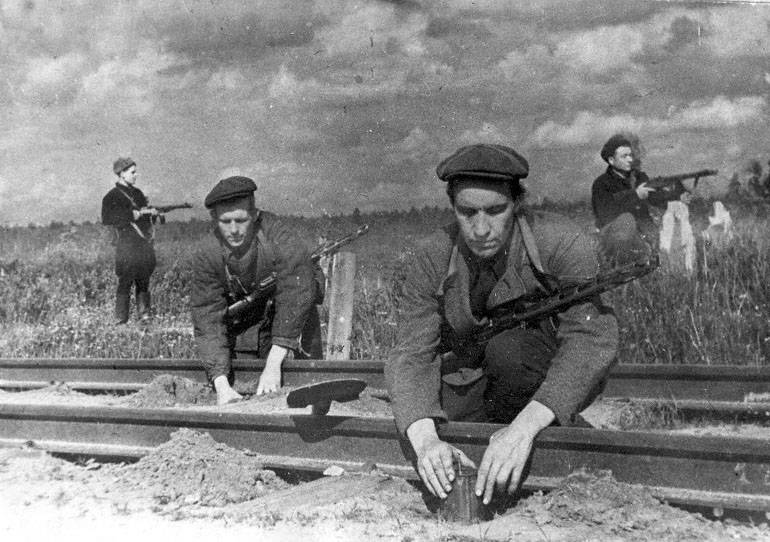
Skillful planning, thoughtful preparation and timely supply of units with mine-blasting equipment predetermined the successful start and development of the “Rail War”. The attacks of the partisans, which began on the night of 3 in August of 1943, were then repeated until mid-September. During this time, the guerrillas of the western regions of the RSFSR have broken 60,4 thousand rails, having exceeded the established rate by more than 20%. During the general offensive of the Soviet troops in the summer and autumn of 1943, the partisan forces of the western regions of the RSFSR, in addition to disrupting enemy transportation, were also widely used for other purposes. On the instructions of the military command, they obstructed the organized withdrawal of the enemy, attacked the headquarters and command posts, seized bridge and ferry crossings and held them until the approach of the Red Army units. Combined with the regular troops, the partisans, as a rule, poured into their composition.
Thus, a study of the plans for the combat activities of the partisans in the western regions of Russia shows that as the partisan struggle unfolds in the enemy's rear, there is a clear tendency for closer coordination between the actions of regular troops and partisans. So, if before the summer of 1942, the planning and coordination of the combat work of the partisan formations, in accordance with the tasks solved by the Red Army, was carried out only sporadically, then, starting from the middle of 1942, with the creation of Central and Frontal BBA, it became systematic.
Initially, plans were made relatively for short periods of time: for one or two months or for the period of a front-line operation, and in the future - for longer periods. They were developed by broadband access in close contact with front-line military councils. In setting the tasks, the situation and the nature of the goals that the regular troops faced were more fully taken into account. More attention has been paid to the operational management of individual guerrilla groups, maintaining stable and regular communication with them and logistical support. In order to more specifically guide the actions of the brigades and individual detachments, front-line broadband access began to be transferred to the German rear of the operational groups, which were created from the staff of the headquarters and were provided with communications. The centralized control of the partisan movement allowed the Supreme Command headquarters to set before the partisans the task of delivering massive strikes precisely on those railway lines, on which the enemy feverishly transferred their reserves to the necessary front area.
The activities of the Central and Frontline Broadband Internet to implement the plans for the “Rail War” are an example of a well-thought-out and precise organization of the interaction of partisans and regular troops on an operational-strategic scale. All partisan formations struck the first blow to the railways with a common signal from the Central Fast Air Service. Improving the operational planning of guerrilla formations affected the effectiveness of the struggle in the enemy's rear, gave this fight a more organized character, allowed the guerrillas to direct efforts at the right time on the most important objects, contributed to the improvement of the interaction of partisans with regular troops.
Sources:
Arbatov A., Vinogradov V., Grechko A. and others. History World War II 1939-1945, T. 6. M .: Voenizdat, 1976, S. 141-1767.
Dyukov A. Who commanded the Soviet partisans. Organized chaos. M .: Veche, 2012. C.114-175.
Spiridenkov V. Forest Soldiers. Guerrilla war in the North-West of the USSR. 1941 — 1944. - M .: Tsentrpoligraf, 2007. C. 127-134, 181-194.
Azassky N. From the experience of planning guerrilla warfare. // Military Thought. 1977. No.7. C. 100-106.
Bystrov V. Soviet partisans. From the history of the partisan movement during the Great Patriotic War. M .: Politizdat, 1961. C. 33-118.
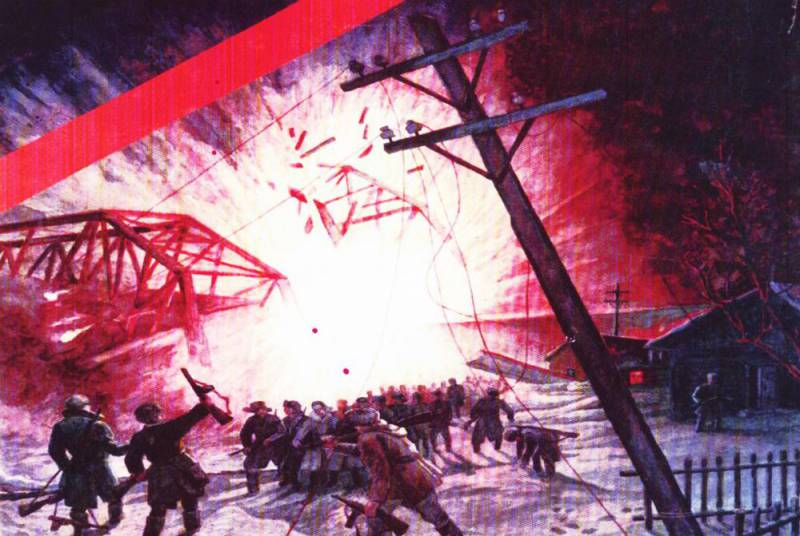
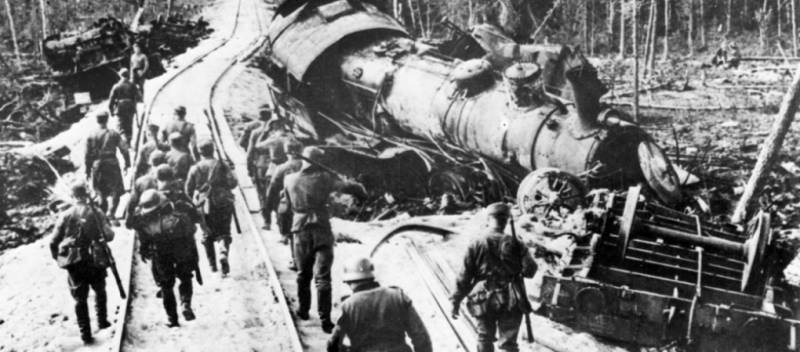
Information